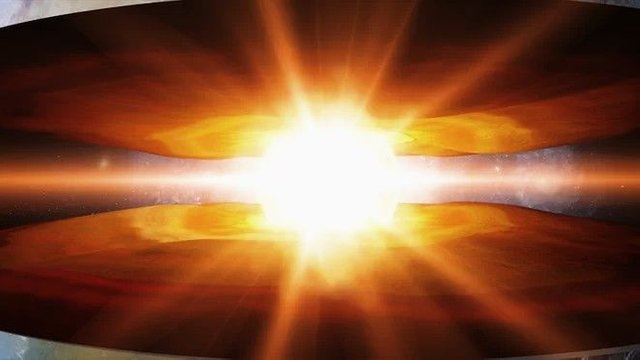Earth's Inner Core Shouldn't Technically Exis

Earth's solid inner core formed about one billion years ago. Researchers are getting closer to figuring out how it happened.
Credit: Shutterstock
One day, about a billion years ago, Earth's inner core had a growth spurt. The molten ball of liquid metal at the center of our planet rapidly crystallized due to lowering temperatures, growing steadily outward until it reached the roughly 760-mile (1,220 kilometers) diameter to which it's thought to extend today.
That's the conventional story of the inner core's creation, anyway. But according to a new paper published online this week in the journal Earth and Planetary Science Letters, that story is impossible.
In the paper, the researchers argued that the standard model of how the Earth's core formed is missing a crucial detail about how metals crystallize: a mandatory, massive drop in temperature that would be extremely difficult to achieve at core pressures. [6 Visions of Earth's Core]
Weirder still, the researchers said, once you account for this missing detail, the science seems to suggest that Earth's inner core shouldn't exist at all.
The paradox at the center of our planet
"Everyone, ourselves included, seemed to be missing this big problem," study author Steven Hauck, a professor of Earth, Environmental and Planetary Sciences at Case Western Reserve University in Ohio, said in a statement. Namely, they were missing "that metals don't start crystallizing instantly unless something is there that lowers the energy barrier a lot."
In chemistry, this extra energy is known as the nucleation barrier: the point at which a compound visibly changes its thermodynamic phase. Liquid water, for example, freezes into a solid at the familiar 32 degrees Fahrenheit (0 degrees Celsius). If you've ever made ice cubes at home though, you know that even water stored at its freezing point can take several hours to fully crystallize. To speed up the process, you need to either expose the water to significantly colder temperatures (this is called "supercooling") or expose it to an already-solid piece of ice to lower the nucleation barrier, reducing the amount of cooling required.
Supercooling is easily achieved for a single ice cube, but for Earth's gigantic inner core, things get a little trickier, the researchers said.
"At the pressures of the core, it would have to cool 1,000 degrees Kelvin [726 degrees C or 1,340 degrees F] or more below the melting temperature in order to crystallize spontaneously from pure liquid," Hauck told Live Science. "And that's a lot of cooling, especially since at the moment, the scientific community thinks the Earth cools maybe about 100 degrees K per billion years."
According to this model, "the inner core shouldn't exist at all, because it could not have been supercooled to that extent," study author Jim Van Orman, also a professor of Earth, Environmental and Planetary Sciences at Case Western, told Live Science. The molten inner core's nucleation barrier, he said, must have lowered some other way — but how?
The core of the problem
In their paper, the researchers proposed one possibility: Perhaps a massive nugget of solid metal alloy dropped from the mantle and plunged into the liquid core. Like an ice cube dropped into a glass of slowly freezing water, this solid chunk of metal could have lowered the core's nucleation barrier enough to kick-start a rapid crystallization.
There's a big caveat, though: It would have to be a truly massive chunk of metal to work.
"In order to be released into the core and then make it all the way down to the center of the Earth without dissolving … this droplet would have to be on the order of about 10 km [6.2 miles] in radius," Van Orman said. That means a diameter about the length of the island of Manhattan.
The Case Western researchers said that while they favor this new explanation over the conventional model, they're eager for members of the scientific community to weigh in with theories of their own.
"We've talked about what ideas are implausible, and we've suggested an idea that's potentially plausible," Hauck said. "If it happened that way, it's possible that some signature of that event might be detectable through seismic studies. Studying the centermost part of the planet is about the hardest to access with these waves, so it'll take time."
Hopefully, we can look forward to an answer within the next billion years.